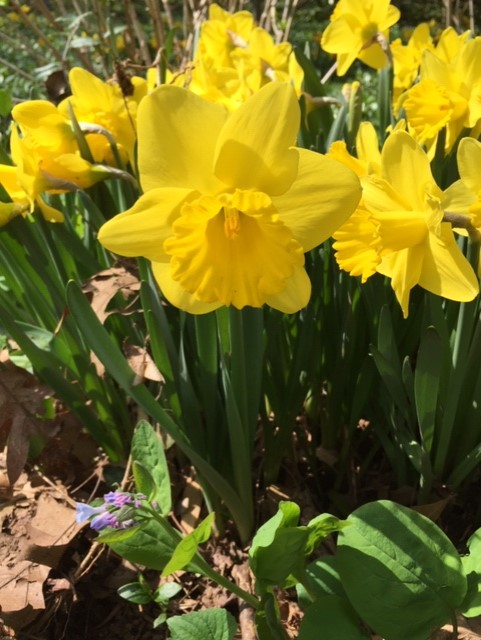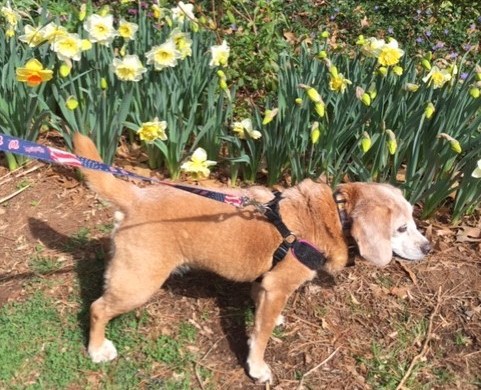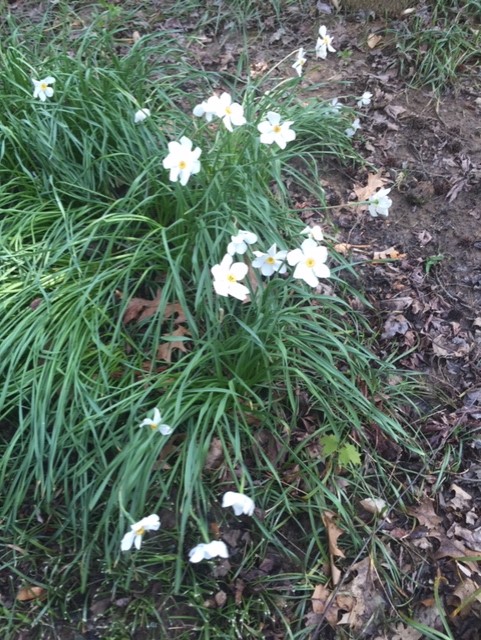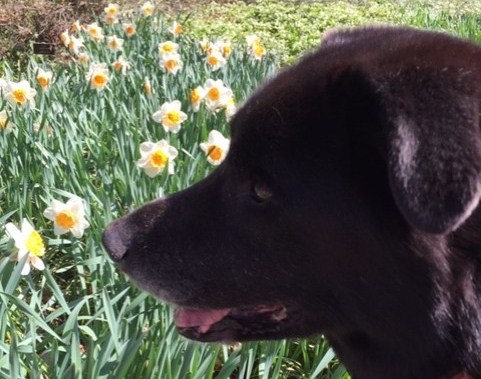I really don’t know what to believe right now: the groundhog who just predicted six more weeks of winter or the daffodils that started to poke their heads up through the snow. Either way, my thoughts are definitely turning toward springtime hiking and that sunshine yellow beauty that is nature’s promise of warmth to come — the daffodil.
As you head out on your walks and hikes on the D.C. trails, Maryland trails and Virginia trails (or even stroll through your garden) in a few weeks, here are some things to keep in mind about the daffodil. Some are good-to-know facts, while others are just plain fun and could possibly help you in your next trivia game or maybe save you from a social faux pas.

What’s in the Name?
First, let’s start with the name. The official botanical name of the whole genus is Narcissus, while daffodil is the common name. Names like Jonquil, Poet’s Daffodil and Paperwhites are all types of Narcissus, but we laypeople tend to call them all daffodils.
But why Narcissus? The name apparently derives from the Greek myth of a handsome youth named Narcissus, who was given the gift of permanent beauty and immortality by the gods. But the price was that he was never allowed to see his own reflection, lest the gift be taken away.
A beautiful wood nymph named Echo came across Narcissus one day while he was hunting, but Narcissus rejected her attempts to win him over. She was so consumed by her love and the devastation of his rejection that she wept and wailed until all that was left of her was her distant voice — an echo.
When Nemesis, the goddess of revenge, learned of poor Echo, she lured Narcissus to a shimmering lake. In his vanity, Narcissus could not resist looking at his own reflection and he fell in love with himself. He also happened to fall into the water and drown while trying to get a better glimpse. It was said that a beautiful flower took his place by the water.


Variety is this Flower’s Spice of Life
As I’ve hiked with my dogs over the years, I am always amazed at the different varieties of daffodils that I encounter. I find at least one “new-to-me” variety each year. That’s not surprising given that there are more than 13,000 varieties of daffodils, all of which can then be classified into 12 or 13 categories (some classification charts omit the category that includes wild daffodils).
One of my favorite springtime walks is through McCrillis Gardens in Bethesda, MD, where my pups and I have found a multitude of varieties blooming at the same time in this 5-acre garden alone. As I quickly glance at my photos (all taken at McCrillis Gardens) from previous years, it appears I have photographic specimens from many of those categories. Perhaps you will be able to do the same when you set out on foot and paw this spring too.
I am not an expert botanist, or even an expert gardener, but I will try to identify some of my photos throughout this post into these categories as best I can. For a list and description of the classifications, I encourage you to click here and try your hand at categorizing the ones you see in the coming weeks.





Symbolism: Hope, New Beginnings and Resilience
As one of the first flowers of spring, the daffodil is the symbol of hope, new beginnings, and new birth, as well as resilience for having survived the winter and breaking through snow. It is no wonder that the American Cancer Society adopted this flower to spread the message of hope that cancer will be cured in our lifetime.
I’ll take a moment to dedicate this post to all of those who have been afflicted by cancer, whether personally, as a family or as a friend. In my own case, my father-in-law and a good friend/college roommate who are both currently fighting. For both my parents and my sister-in-law who are survivors. For my aunt, as well as two young children of friends, all who lost their battles way too young. And even for my dog Colbie, who passed away from cancer last year. May the hope of a cure be in our future.

Other Cultural References and Fun Facts
The daffodil has other broad cultural significance throughout the world too:
- In China, the daffodil represents good fortune. It is believed to bring forth positive news and events, which is why it is associated with the Chinese New Year.
- In Wales, it is believed that the first person to see a daffodil in the spring will be blessed with gold. That might explain why it is the national flower there.
- Arabian Countries believe that the daffodil is an aphrodisiac and a cure for baldness.
- In medieval Europe, it was believed that if you looked at a daffodil and it drooped, it was an omen of impending death.
- In Egypt, the daffodil symbolizes youth and beauty, as it was a sacred flower to the goddess Isis.
- For generations, poultry farmers would not grow daffodils on their farms because of an old wives’ tale that these flowers were unlucky and would cause their hens to stop laying eggs.
- And there are many colloquial names given to daffodils throughout the world, including Yellow Maidens, Butter and Eggs, Easter Roses, Lent Lilies and Daffodillies.



The Dos and Don’ts of Daffodils
Believe it or not, there are some no-nos in the daffodil world. Let me help you navigate these.
- Daffodil leaves and bulbs contain a toxic alkaloid called lycorine, which keeps deer, rabbits and squirrels away. But it can also be toxic to dogs and can make them sick, so keep your pups from digging around daffodil bulbs or chewing on their leaves.
- A daffodil’s sap is harmful to other plants, so do not add daffodils to a mixed flower arrangement until they have soaked in water separately for 24 hours. After they soak, you can add them to arrangements as long as you do not recut the stems.
- Don’t gift a single daffodil to someone, as this apparently implies misfortune. Giving a bunch of daffodils, however, symbolizes joy, happiness and forgiveness. So if you don’t want to be in the dog house, go for a whole bouquet!
- And do give a bunch of daffodils to someone with a March birthday, as this is their birth flower.
- If you are looking to provide some meaning behind your gift of a daffodil bouquet, do consider this: yellow daffodils represent positivity and joy; white daffodils represent youth and purity; and, orange daffodils represent friendship and optimism. Purple daffodils are not common, but apparently represent selfishness and self-obsession. So maybe hold off on giving those to someone you are trying to win over.



Savor Every Moment
Whether you want to identify the daffodils that you spot on your hikes or just regale your dog and your friends with your infinite wisdom on such matters as the myth of Narcissus or the potential cure for baldness, I hope that this post proves helpful as you lace up those boots and strap on those leashes for your spring hikes.
Perhaps the best takeaway though from the daffodil is to savor every moment of every day. The daffodil blooms once a year and is fleeting. Enjoy their beauty while they are here, just as you should appreciate what surrounds you and be thankful for the time that you are given.


Daffodils are my absolute favorite, and your photos of all the different varieties are just glorious!
Thank you so much! Daffodils are my favorite too. I’m so glad that you liked the photos.
Wonderful post, full of gorgeous photos! Daffodils are one of those flowers that make it impossible to not grin when you see them, so happy and proud of their own beauty (and so appropriately named, Narcissus)!
Rebecca, I am so glad you enjoyed this post. Thank you! I agree that you can’t help but smile when you see that bright yellow flower pop up!